神经网络入门-MINIST(未完待续)
base on 《Make Your Own Neural Network》by Tariq Rashid, 中文版
神经网络
理论
结构
神经元不会理解做出反应,而是会抑制输出,直到输入大到超过阈值才触发输出(避免噪声)
所以有激活函数,直观来讲输入输出是一个阶跃函数,但一般改进为S函数:平滑更符合自然规律
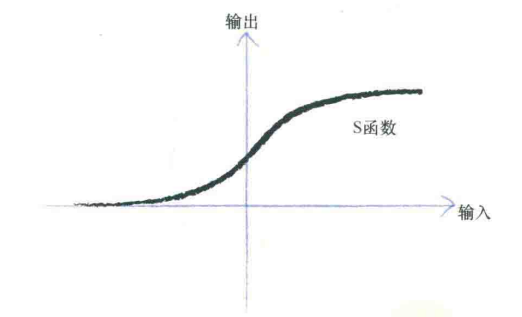
多个输入信号被组合成更强大的输入信号
神经元输出传递也是后面神经元的输入:
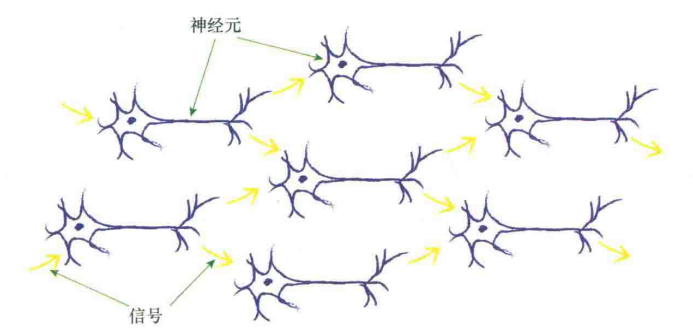
于是我们对它进行分层设计:
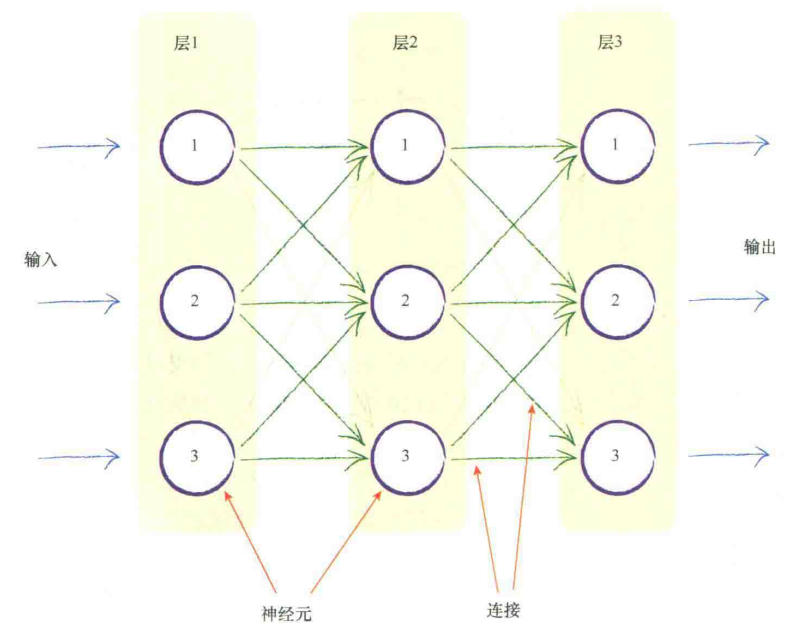
现在需要进行学习调整其中的参数,其中最简单的方法就是各个边的权重
一开始权重取随机值
输出
第一层仅接受输入
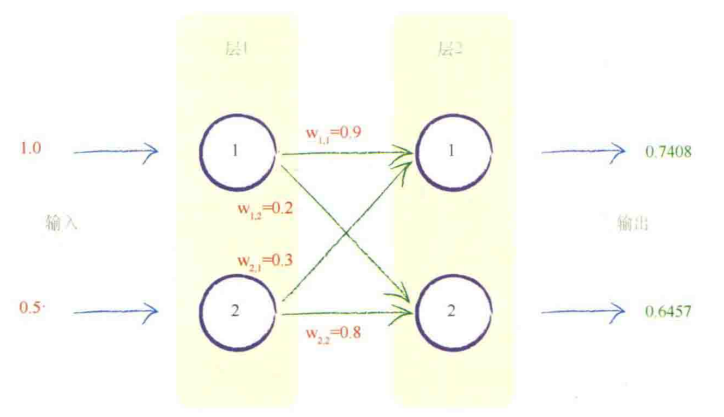
这个计算输出可以用矩阵来简化
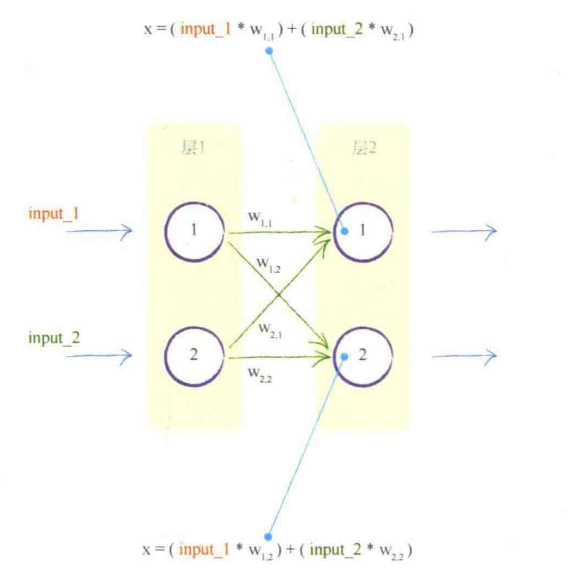 $$
X = WI \\
O = sigmoid(I)
$$
对于三层网络,一般称中间那层为隐藏层
$$
X = WI \\
O = sigmoid(I)
$$
对于三层网络,一般称中间那层为隐藏层
输入层-隐藏层,隐藏层-输出层之间都有这个关系
反向传播
将样本的结果和计算结果比较得到误差
将误差分给多个输入优化它们的权重
这就是反向传播:
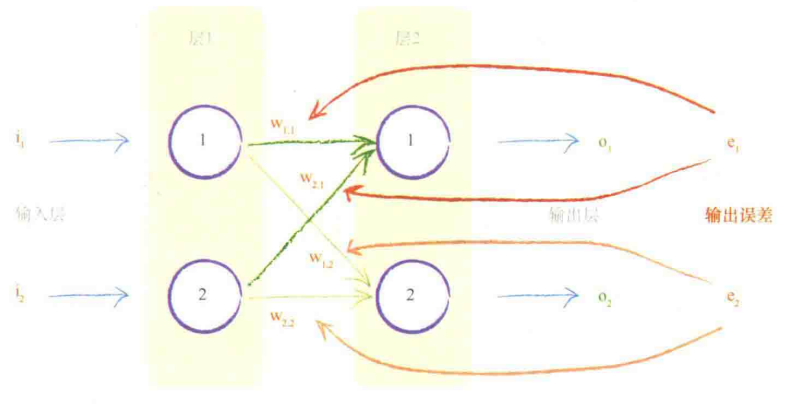
相当于翻过来输出当输入,得到每个节点的误差值(尽管中间节点并没有一个目标值)
权重更新:梯度下降法
找到总误差的最小值点,这里定义总误差为: $$ E = e_1^2 + e_2^2 +…+e_n^2 $$ 这样避免了相互抵消
以梯度下降的方向更新权重,需要求出梯度、选择合适的步长,步长的选择影响还是很大的:

步长以学习率$\alpha$来反应: $$ w_{j,k} = w_{j,k} - \alpha\frac{\partial E}{\partial w_{j,k}} $$ 现在只考虑隐藏层和输出层之间的权重:
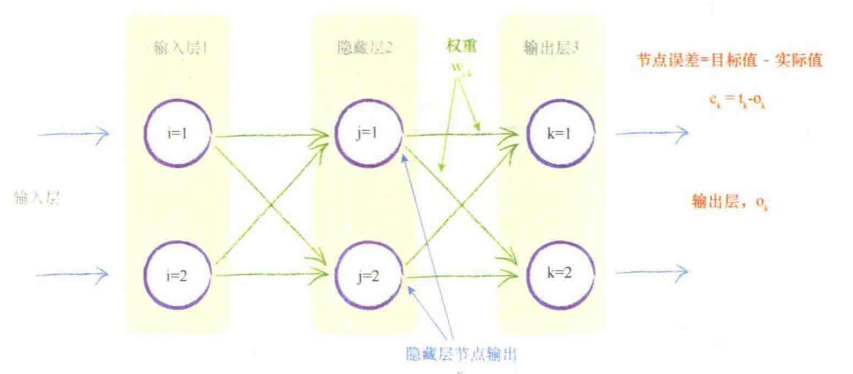 $$
E = \sum (t_k -o_k)^2 \\
\frac{\partial E}{\partial w_{j,k}} = \frac{\partial E}{\partial o_k} \cdot \frac{\partial o_k}{\partial w_{j,k}}
$$
$t_k$是目标值是常数,进一步化简,得到表达式:
$$
E = \sum (t_k -o_k)^2 \\
\frac{\partial E}{\partial w_{j,k}} = \frac{\partial E}{\partial o_k} \cdot \frac{\partial o_k}{\partial w_{j,k}}
$$
$t_k$是目标值是常数,进一步化简,得到表达式:

这是隐藏层与输出层之间的权重,而输入层与隐藏层之间的权重,通过节点的“误差”代换掉即可,这里用到了对称性的思想

总之,我们统一为:

实践
训练集:用于训练
测试集:评价好坏
输出中最大的那个的编号作为结果
最理想的输出是 [0, 0, …1, 0, 0]这样的,但实际不可能(sigmoid)上下界
改进
多次重复训练叫做世代
epoch和学习率会影响性能:
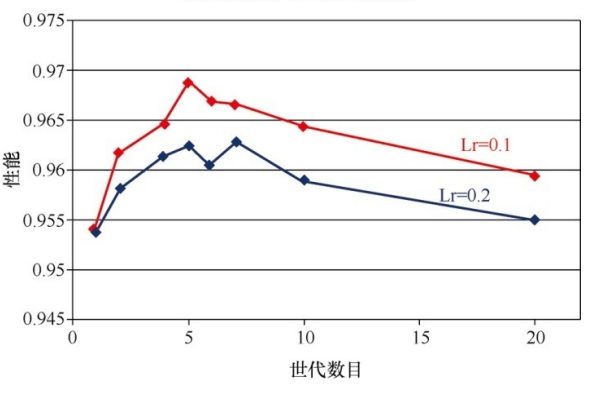
网络的结构(隐藏层数量、层数)
其它
自己的手写数字
反向查询:从label反推Image
对图像旋转后对结果的影响
源码:
# build a class
import numpy
import scipy.special
class neuralNetwork:
# initial parameters and something else
def __init__(self, inputnodes, hiddennodes, outputnodes, learningRate) -> None:
# the 3 layers
self.inodes = inputnodes
self.hnodes = hiddennodes
self.onodes = outputnodes
# learning rate alpha
self.lr = learningRate
# weight 正态分布
# self.wih = numpy.random.rand(self.hnodes, self.inodes) - 0.5
# self.who = numpy.random.rand(self.onodes, self.hnodes) - 0.5
self.wih = numpy.random.normal(0.0, pow(self.hnodes, -0.5), (self.hnodes, self.inodes))
self.who = numpy.random.normal(0.0, pow(self.onodes, -0.5), (self.onodes, self.hnodes))
# activate function
self.activate_function = lambda x: scipy.special.expit(x)
# train: update weights
def train(self, inputs_list, targets_list):
# convert to Array (why 2D?)
inputs = numpy.array(inputs_list, ndmin=2).T
targets = numpy.array(targets_list, ndmin=2).T
# matrix computing
hidden_inputs = numpy.dot(self.wih, inputs)
hidden_outputs = self.activate_function(hidden_inputs)
final_inputs = numpy.dot(self.who,hidden_outputs)
final_outputs = self.activate_function(final_inputs)
output_errors = targets - final_outputs
# go back
hidden_errors = numpy.dot(self.who.T, output_errors)
input_errors = numpy.dot(self.wih.T, hidden_errors)
# update
self.who += self.lr * numpy.dot(output_errors * final_outputs
* (1.0 - final_outputs), numpy.transpose(hidden_outputs))
self.wih += self.lr * numpy.dot(hidden_errors * hidden_outputs
* (1.0 - hidden_outputs), numpy.transpose(inputs))
# query: take input and compute output
def query(self,inputs_list):
# convert to Array (why 2D?)
inputs = numpy.array(inputs_list, ndmin=2).T
# matrix computing
hidden_inputs = numpy.dot(self.wih, inputs)
hidden_outputs = self.activate_function(hidden_inputs)
final_inputs = numpy.dot(self.who,hidden_outputs)
final_outputs = self.activate_function(final_inputs)
return final_outputs
# set parameters
input_nodes = 784 # 28*28
hidden_nodes = 100
output_nodes = 10
learning_rate = 0.3
nn = neuralNetwork(input_nodes, hidden_nodes, output_nodes, learning_rate)
training_data_file = open("mnist_dataset/mnist_train_100.csv", "r")
training_data_list =training_data_file.readlines()
training_data_file.close()
epochs = 5
for e in range(epochs):
for record in training_data_list:
all_values = record.split(",")
inputs = (numpy.asfarray(all_values[1:]) / 255.0 * 0.99) + 0.01
# ideal and practial targets
targets = numpy.zeros(output_nodes) + 0.01
targets[int(all_values[0])] = 0.99
# start training!
nn.train(inputs, targets)
print("epoch", e, "done")
test_data_file = open("mnist_dataset/mnist_test_10.csv", "r")
test_data_list =test_data_file.readlines()
test_data_file.close()
# test the neural network
# scorecard for how well the network performs, initially empty
scorecard = []
# go through all the records in the test data set
for record in test_data_list:
# split the record by the ',' commas
all_values = record.split(',')
# correct answer is first value
correct_label = int(all_values[0])
print(correct_label, "correct label")
# scale and shift the inputs
inputs = (numpy.asfarray(all_values[1:]) / 255.0 * 0.99) + 0.01
# query the network
outputs = nn.query(inputs)
# the index of the highest value corresponds to the label
label = numpy.argmax(outputs)
print(label, "network's answer")
# append correct or incorrect to list
if (label == correct_label):
# network's answer matches correct answer, add 1 to
scorecard
scorecard.append(1)
else:
# network's answer doesn't match correct answer, add 0 to
scorecard
scorecard.append(0)
pass
print(scorecard)
scorecard_array = numpy.asarray(scorecard)
print ("performance = ", scorecard_array.sum() / scorecard_array.size)
依赖文件: